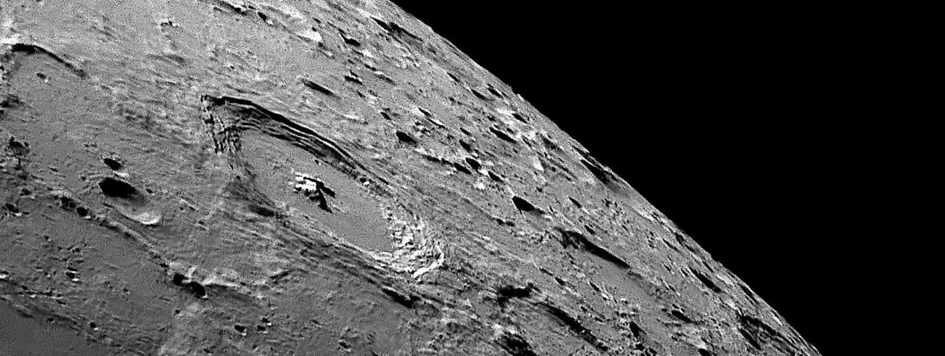Lunar Challenge
The Moon, our closest neighbor in space, provides some unique opportunities to observe a celestial body up close and to learn about planetary science. NASA invites you to observe the moon and learn about its many features.
Even the most modest backyard telescope can yield exciting views of craters, rills, valleys, and mountain ranges. No, you won’t be able to see any of the flags placed on the moon by the Apollo Astronauts (We always get this question), but many other wondrous natural phenomena await even the most casual of observers.

INSTRUCTIONS
Your challenge is to observe the Moon – and identify the features you see. You can snap a picture with your cell phone through the eyepiece of a telescope, take a high quality image with your coupled DSLR, or just sketch what you see – like astronomers have done for centuries. Then upload your image/sketch to our Flickr site using #LunarChallenge. Include your info and identifications of the features in the image, labeled. You can use the provided labeled images taken by Robert Reeves as your guide to identify the features in the picture you took or sketch you made.
Once you have completed a challenge i.e., take picture, identify features (use the checklist in each challenge), and upload image, you can then download your NASA Lunar Observing Challenge Certificate.
Clear Skies!
Binocular Moon Observing Challenge
Although binoculars traditionally have only a modest seven or eight times magnification over the naked eye view, they will bring many lunar features into view. Each of the lunar seas is now seen as an independent body and the brighter craters can now be identified. At crescent phase, the borders of circular Mare Crisium are now evident and shows this lunar sea lies within a great basin that was blasted out of the Moon by an asteroid impact nearly four billion years ago. Binoculars also reveal the bright crater Langrenus near the eastern limb of the Moon.
Read MoreSmall Telescope Moon Observing Challenge
A small telescope such as a 50- or 60-mm refractor or a four- to six-inch reflector will bring into sharp detail all the lunar features previously seen with a pair of binoculars. Details of crater walls and interiors are now revealed and non-crater geological features are evident.
Read MoreNaked Eye Lunar Observing Challenge
As the waxing crescent Moon hangs above the western horizon and mimics the classic smile of Alice in Wonderland's Cheshire cat, the only feature easily discernible to the naked eye is the dark elliptical patch of Mare Crisium. This circular lunar sea is landlocked from the other lunar seas and stands alone near the limb of the Moon. As the Moon's phase advances to first quarter, independent Mare Crisium is joined by the merged form of Mare Serenitatis and Mare Tranquillitatis which combined form the Man-in-the-Moon's right eye.
Read MoreMedium Telescope Lunar Observing Challenge
In addition to viewing lunar craters in detail, a 3- to 4-inch refracting telescope, or a 6- to 8-inch reflecting telescope, brings lunar geology into view. The mountain chains forming the rim of the impact basins cradling some of the circular maria come into sharp view. Craters that have been modified by volcanism after their violent origin by meteor impact can be distinguished.
Read MoreRobert Reeves
Robert Reeves has been enjoying and exploring the Moon since 1958 when he received a 3-inch reflecting telescope for Christmas. Robert took his first lunar photograph in 1959 and he has been imaging the Moon ever since. After receiving a better telescope at Christmas 1960, Robert became self-taught in the art of telescopic lunar photography and learned the techniques of developing and printing film photographs.
Read More








